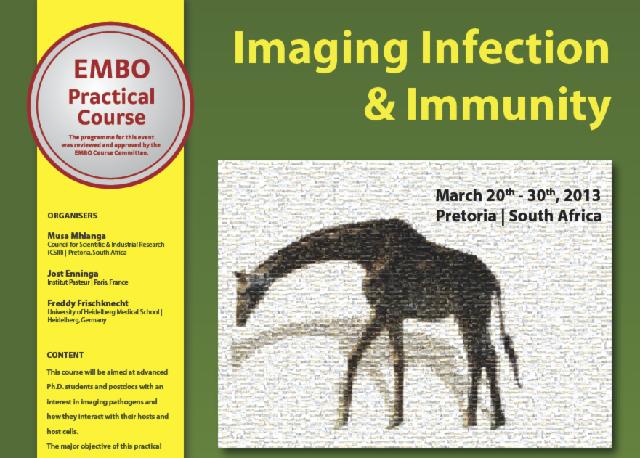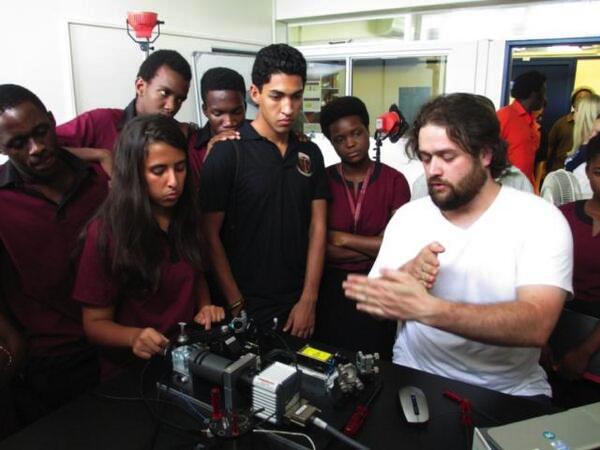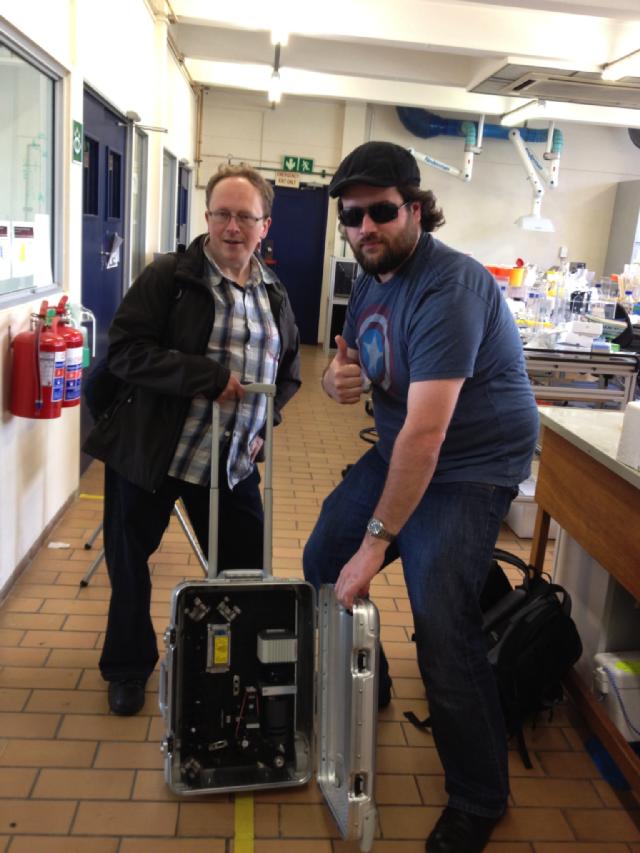From OpenSPIM
One of the reasons for running the OpenSPIM project is to provide a platform for teaching light-sheet microscopy. At the end of March 2013 we have brought OpenSPIM to an EMBO course in South Africa. Here are Pavel Tomancak's first hand impressions on how it worked out:

The EMBO course Imaging Infection and Immunity is a practical course aimed at researchers studying infectious diseases with strong emphasis on imaging. It has been organized three times over the last 4 years by Musa Mhlanga, Freddy Frischknecht and Jost Enninga. The first installment of the course has been held at the CSIR in Pretoria South Africa right before the World Cup and it stayed there ever since. 
Pete Pitrone attended the entire course. He managed to get the OpenSPIM in a suitcase onto an airplane and with the necessary paperwork in hand passed it through the customs without any problems. This is good news since it indicates that we can actually travel to a foreign country by plane bringing a set-up that admittedly looks like a bomb. Freddy Frischknecht also brought parts for his OpenSPIM. Unfortunately he was missing the most important pieces - the objectives - and so there was no imaging on what I called on Twitter OpenSPIM's little Heidelberg bro (the slang was necessary due to Twitter character limits).
Pete built the system four times with the students during the course. We wanted to image His-YFP expressing Drosophila however it was relatively difficult to prepare the Drosophila samples in Musa's lab which works mostly with mammalian cells. Some crucial pieces of equipment were missing - like paint brush and sieves and so until I arrived the students managed to image only some random critters picked up from the local pond. I was able to later on improvise the Drosophila sample prep (the sieves can be substituted reasonably by two lens cleaning tissues and instead of the brush one can use a feather plucked from some random African bird ;-)).

During the course we discovered a problem with the software - the Micro-Manager plugin refused to save anything. Fortunately the good people in Madison, specifically Johannes Schindelin, rescued us as they always do by providing a hot fix for the software issue.
It happened just in time, because the next day the course was visited by high school students from the African Leadership Academy ALA. I presented a talk tailored for younger, non-scientific audience centered around SPIM imaging. It actually wasn't necessary to dumb things down, since many of the students had strong biological background and all, even the particle physicists (;-)), were very smart. Pete and Jessica from Freddy's lab built the set-up with them. This event attracted serious media attention. South African TV was shooting a documentary about women in science and they got so intrigued by our do-it-yourself microscope that they will include it. The ALA students were giving professional interviews. Musa, myself and Pete also talked some non-sense into the camera. I dread what will come out of that, but overall this was a great outreach event.

The feedback on the wiki from the course students was overwhelmingly positive. In their final report they called it absolutely idiot proof. We observed what resources they were using when building the set-up and found out that they focus mainly on the static SolidWorks and real pictures - building it like a Lego. My impression was that especially the students from Africa highly appreciate the fact that we are making this technology accessible. We managed on the last day of the course to record a short but almost perfect time-lapse of His-YFP expressing Drosophila embryo from 6 angles. I will call that a success, we brought down to South Africa bits and pieces and we managed to put together a completely functional SPIM set-up.
We encountered a lot of problems and learned some valuable lessons.
- don't underestimate the sample prep, bring absolutely everything
- if possible bring a big, fast computer for the image processing
- ask everyone to download Fiji before the course even starts
- test the set-up before you go
- tell everyone that the course is going to happen - especially Madison - so that they can brace for emergencies
- bring protective goggles for the students to have at least basic laser safety (as far as I know nobody got blinded during the course).
- design a box to cover the sample chamber - likely you won't image in a microscopy room and Africa is - well - bright
The next course that will feature OpenSPIM will be the EMBO practical course on Marine animal models in evolution & development in Sweden in July.
Pavel
